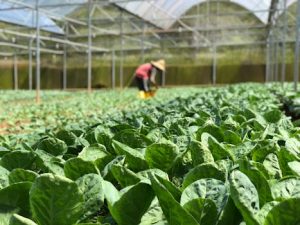Closed-Loop Cuisine: Cities’ Waste-to-Table Revolution
In recent years, there has been a growing movement towards sustainability and responsible consumption. This trend has led to an increase in the popularity of closed-loop cuisine, a concept that centers around the idea of using food waste to create delicious and nutritious meals. While waste reduction and recycling efforts have traditionally focused on materials such as plastics or paper, more attention is now being placed on food waste and its potential as a valuable resource. This has sparked a revolution in cities around the world, where the close proximity of businesses and residents creates a unique opportunity for implementing closed-loop cuisine practices. In this article, we will explore the waste-to-table revolution taking place in cities and how closed-loop cuisine is transforming the way we think about food consumption.
The Problem of Food Waste
The United Nations estimates that approximately one-third of all food produced for human consumption is lost or wasted each year, which amounts to about 1.3 billion tonnes. This is a staggering statistic, especially when you consider the fact that nearly 9% of the global population goes hungry every day. Food waste is a major problem, not only in terms of its impact on global food security, but also in its contribution to greenhouse gas emissions and landfills. When food is thrown away, it ends up in landfills where it decomposes and releases methane, a potent greenhouse gas that contributes to climate change. This is why addressing food waste is crucial in the effort to combat climate change and create a more sustainable future.
What is Closed-Loop Cuisine?
Closed-loop cuisine is a sustainable food system that aims to reduce food waste by using scraps and leftovers to create new meals. It follows the same principles as a circular economy, where resources are kept in use for as long as possible. In closed-loop cuisine, food waste that is generated within a city is utilized by restaurants and other food establishments to create new dishes. This not only helps reduce food waste but also has economic benefits for businesses, as they are able to save money on food costs and divert waste from landfills. In addition, by using these scraps and leftovers, closed-loop cuisine also creates a sense of community and connection, as the food is often shared and enjoyed together.
Cities Leading the Waste-to-Table Revolution
San Francisco, USA
San Francisco has long been a pioneer in sustainability, and it’s no surprise that it is leading the way in the waste-to-table revolution. In 2009, the city introduced mandatory composting for all residents and businesses, making it the first city in the United States to do so. This move has resulted in a significant decrease in food waste sent to landfills, and has also created a market for compostable material that is used by restaurants and farms to grow fresh produce. San Francisco’s renowned restaurant, The Perennial, has taken the concept of closed-loop cuisine to the next level by using their own composting system and sourcing ingredients from their on-site aquaponic farm.
Tokyo, Japan
Tokyo is another city embracing closed-loop cuisine as a way to combat food waste. The city’s strict recycling policies have made it one of the cleanest and most efficient cities in the world. However, with a population of over 13 million people, food waste is still a major issue. In response, Tokyo has implemented a system where food waste is collected, processed, and turned into animal feed and fertilizers. This has not only significantly reduced the amount of food waste in the city, but it has also created a sustainable source of feed and fertilizer for local farms.
Melbourne, Australia
Melbourne has been garnering attention for its innovative approach to sustainable food practices. The city’s “green cart” program allows residents to dispose of their food scraps in designated bins, which are then collected and composted. In addition, several restaurants in the city have incorporated closed-loop cuisine into their menus, using food waste as ingredients for new dishes. One successful example is the restaurant Silo, which prides itself on being “Australia’s first zero-waste restaurant.” Silo uses local ingredients, including food waste, to create delicious and sustainable meals for its customers.
The Future of Closed-Loop Cuisine
The waste-to-table revolution is gaining momentum, and cities around the world are beginning to see the benefits of closed-loop cuisine. By addressing the issue of food waste, cities are not only becoming more sustainable, but they are also creating economic opportunities and fostering a sense of community. As more people become aware of the impact of food waste and the potential it holds, it is likely that closed-loop cuisine will continue to grow and become a more integral part of our food systems. With its many benefits, it has the potential to create a more sustainable and equitable world for all.
Conclusion
The waste-to-table revolution is an important step towards a more sustainable and responsible food system. By embracing the concept of closed-loop cuisine, cities are not only reducing their environmental impact but also creating economic opportunities and promoting community engagement. As seen in San Francisco, Tokyo, and Melbourne, this simple idea has the power to transform the way we think about and consume food. It is up to us to support and promote this waste-to-table revolution, and together we can create a better future for ourselves and the planet.







